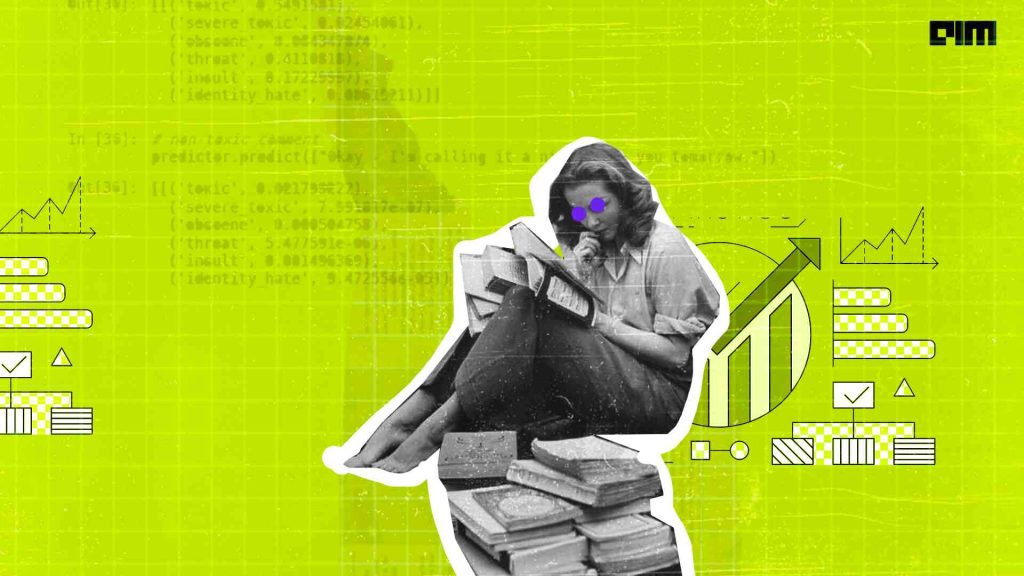The problem companies face today is not the lack of data; on the contrary, it is the massive loads of data that data scientists find difficult to deal with. Big data has disrupted the data science industry as we knew it, including the subjects data scientists engage with. While statistics have not been popular among data scientists in the past, it plays a huge underlying role in better data analysis, prediction and inference. It helps comb through the data and present the findings in a simple manner, thereby identifying hidden patterns and aspects of data, which plays a crucial role in data-driven decisions.
But data scientists typically tend to lack the in-depth knowledge in statistics that could further their insight generation. Additionally, given the broad nature of statistics, not everything is relevant to data science. Considering this barrier, Analytics India Magazine has identified the top statistics books catered to data science.
The Signal and the Noise: Why Most Predictions Fail but Some Don’t
by Nate Silver
Tagged as ‘One of the more momentous books of the decade’ by The New York Times Book Review, The Signal and the Noise is a comprehensive guide on making better predictions using statistical models. The book has been deemed to prepare data scientists to communicate their findings clearly and precisely. Nate Silver is a popular blogger known for his baseball performance prediction system and his prediction of the 2008 election, among other works. This book draws on his learnings and guides data scientists on distinguishing ‘true signals’ from noisy data, prediction mistakes to avoid, the prediction paradox and more through excerpts from some of the most successful forecasters in different fields and his real-life experiences.
Find the book here.
Think Stats
by Allen B. Downey
Think Stats introduces probability and statistics for Python programmers and majorly covers concepts directly related to data science. With Python code examples, Think Stats is catered towards programmers with experience, teaching them statistical concepts through practical data analysis examples and encouraging them to work on real datasets. It is based on Bayesian methods and covers topics like statistical thinking, correlation, hypothesis testing regression, time series analysis, survival analysis, distributions and analytical methods. Downey’s other book, Think Bayes, explores solving statistical problems with Python code.
Find the book here.
Naked Statistics: Stripping the Dread from the Data
By Charles Wheelan
An advanced statistics book, Naked Statistics, has been remarked to make ‘statistics come alive’. The book starts with basic concepts such as normal distribution and moves on to complex topics. Filled with examples and case studies, the book takes a small step away from technical details and focuses on the underlying concepts of statistical analysis. It covers topics like inference, correlation, regression, and practical examples.
Find the book here.
Statistics in Plain English
by Timothy C. Urdan
Statistics in Plain English covers general statistical techniques and concepts in an easy-to-understand manner. Different chapters in the book explain and illustrate, with an example, a statistical technique, including central tendency and describing distributions, t-tests, regression, repeated measures, ANOVA, and factor analysis. While the book isn’t catered towards data scientists, it is an ideal book for data science beginners and covers the topics of regression, distribution, factor analysis and probability.
Find the book here.
Computer Age Statistical Inference
by Bradley Efron and Trevor Hastie
Computer Age Statistical Inference explores the data analysis and data science revolution through classical inferential theories of Bayesian, Frequentist and Fisherian. It talks about the theories behind machine learning algorithms with in-depth explanations and use-case examples on topics such as spam data. The topics covered in the book include machine learning, deep learning, hypothesis testing, random forests, survival analysis, logistic regression, empirical Bayes, the jackknife and bootstrap, Markov chain Monte Carlo and inference after model selection. In the end, the book speculates the future direction of data science and statistics.
Find the book here.
Practical Statistics for Data Scientists
by Peter Bruce and Andrew Bruce
Practical Statistics for Data Scientists is a guide on applying statistical methods to data science through practical code examples and explanations for statistical terms. Catered towards data scientists with familiarity with R programming language, this book is a quick reference to understand how to incorporate statistical methods and avoid their misuse. The book covers data structures, datasets, random sampling, regression, descriptive statistics, probability, statistical experiments and machine learning. The code is available in both Python and R.
Find the book here.
Pattern Classification
By Richard O Duda
A popular book explaining mathematical formulas and algorithms, Pattern Classification, was first published in 1973 and updated a few years ago. The book studies neural networks, machine learning and statistical learning with classical and new methods. It includes examples, case studies, and algorithms to explain specific techniques and historical remarks. The topics covered include Bayesian decision theory, stochastic methods, unsupervised learning and clustering, linear discriminant functions, nonparametric techniques, algorithm independent machine learning, multilayer neural networks and non-metric methods.
Find the book here.
Advanced Engineering Mathematics
By Erwin Kreyszig
Originally published in 1962 and updated in 2015, Advance Engineering Mathematics is a popular theoretical choice for engineers, computer scientists and data scientists to learn about statistics and practical applications. The book includes differential equations, Fourier analysis, vector analysis, complex analysis and algebra. The latest version of the book explores using technology for conceptual problems and projects from the lens of statistics and advanced mathematics.
Find the book here.






















